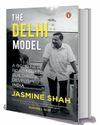
Bank of Baroda has launched a new “Utsav Deposit” scheme with a term period of 400 days, which the public sector lender has launched specially for the festive season. Under this FD, general public will be offered an interest rate of 7.3 per cent, while senior citizens will get 7.8 per cent. Super senior citizens (people aged 80 and above) will get 7.9 per cent interest.
Bank of India, too, has recently launched a special 400-day retail term deposit scheme at interest rates ranging from 7.3 per cent (general public) to 7.95 per cent (super senior citizen). In case one opts for non-callable deposit, which means there is no premature withdrawal available, the interest rates offered are higher—between 7.45 per cent to 8.1 per cent.
The country’s largest lender, State Bank of India, too, has a similar 400-day term deposit scheme called Amrit Kalash, and a 444-day term deposit scheme called Amrit Vrishti, offering higher interest rates. Many other banks, including Union Bank, have launched special term deposit schemes.
This rush by lenders to offer special fixed deposit schemes at attractive interest rates comes against the backdrop of bank deposits growing at a slower pace than credit growth. Over the last few years, people have increasingly turned to stock markets and mutual funds. More than 024,000 crore is coming to mutual funds per month via SIPs (systematic investment plans) alone. Finance Minister Nirmala Sitharaman had in August nudged state-owned banks to undertake special drives to mobilise deposits.
Clearly, there was a need for banks to make term deposits slightly more attractive and that is why we see these special offers. But, the question is, should individuals park their money in long-term deposits now, or wait?
This story is from the October 27, 2024 edition of THE WEEK India.
Start your 7-day Magzter GOLD free trial to access thousands of curated premium stories, and 9,000+ magazines and newspapers.
Already a subscriber ? Sign In
This story is from the October 27, 2024 edition of THE WEEK India.
Start your 7-day Magzter GOLD free trial to access thousands of curated premium stories, and 9,000+ magazines and newspapers.
Already a subscriber? Sign In

Forging the future
As the curtain falls on 2024, I take pride in the extraordinary milestones achieved under the leadership of Prime Minister Narendra Modi. This year stands as a testament to the Modi government's resolve to forge a resilient and forward-looking Bharat. From groundbreaking advancements in infrastructure to visionary global initiatives, these efforts resonate deeply with the vision of Viksit Bharat.

Our strange democracy
Abraham Lincoln is lauded as among the very best presidents the US ever had: the statesman par excellence successfully steered the nation through the devastating and perilous years of the American civil war. Not only did Lincoln manage to keep his country united, he also ensured the passage of the 13th amendment to the US constitution, which abolished slavery.

Five years of post-pandemic fashion
It has been five years since we discovered what Covid-19 was, and five years since it disrupted the world forever. The World Health Organization activated their emergency systems on January 1, 2020, and informed the world by January 4, 2020. By the end of that week, they had set guidelines for various countries to follow. Comparable to the Spanish flu of 1918, more than 7 million people have died of Covid according to official data. Unofficially, no one has an idea. WHO has just this week asked China to provide critical data to understand the virus's origins as a “moral and scientific imperative”.

Community spirit
Rhythm of Dammam opens a window to the world of African-origin Siddis of Uttara Kannada

'Breaking' down a scandal
Society Girl is not just a case study of a high-profile death in Pakistan but also a stark commentary on media trials

Progress card
Jasmine Shah's book tells you what the AAP has achieved in Delhi in the last 10 years

SENSE IN NONSENSE
In his latest book of poetry, Ruskin Bond is at his funniest

Get ready for Trump bump
The ‘butterfly effect’ is a beautiful, mysterious metaphor of the planet’s interconnectedness.

QUIET FLOWS THE FAITH
The melding of an ancient amorphous faith and the latest science; of an antique tradition and new practices; ways of life older than memory and new expressions is happening at Prayagraj in Uttar Pradesh.

Trash to treasure
How a weed-choked Dal Lake spurred Maninder Singh's journey to become a waste management visionary